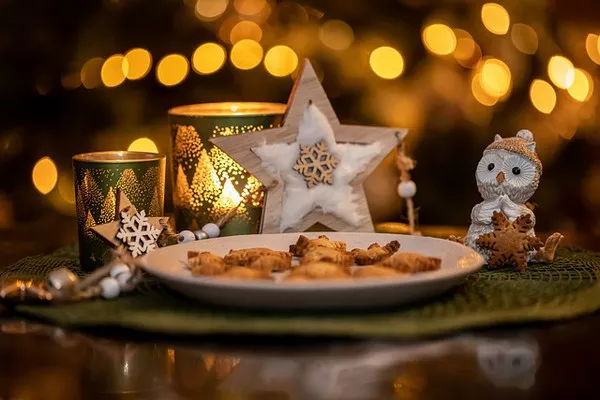Every year on the night of January 13-14, many across the former Soviet Union mark the celebration of the Old New Year. Although the holiday was decommissioned over a thousand years ago, it continues to hold a special place in the hearts of many, especially in Ukraine. This article explores the Old New Year’s origins, the traditions that accompany it, and the lasting impact of these customs on modern-day celebrations.
The Origins and Evolution of the Old New Year
In 1918, the Soviet authorities adopted the Gregorian calendar, a shift that aimed to address discrepancies with the vernal equinox and its impact on Easter. This change led to a redefined date for New Year’s Day, which moved to January 1 on the Gregorian calendar. However, many continued to observe the Julian calendar, which resulted in the Old New Year — a celebration that takes place on January 14. Over time, this unofficial holiday has evolved into a time for Ukrainians to reconnect with their cultural roots, blending ancient rituals with modern festivities.
Traditional Celebrations of the Old New Year in Ukraine
The celebration of the Old New Year in Ukraine overlaps with the observance of Melanka on January 13 and Vasyl on January 14. Under the New Julian calendar, these two events are now celebrated 13 days later than the traditional dates. The customs tied to the Old New Year are rich with family gatherings, feasts, and folk traditions:
Generous Evening (January 13): Families come together to share a festive meal, often wearing embroidered shirts to honor Ukrainian heritage.
Kutia: A special version of kutia, a ceremonial dish made of grains, is prepared with compote, honey, nuts, and dried fruits to mark the occasion.
12 Meatless Dishes: The table is laden with a variety of meatless dishes, along with sausages and roasted meats as part of the feast.
Caroling and Nativity Scenes: From January 13-19, streets are adorned with nativity scenes, and carolers (koliadnyky) perform theatrical plays, bringing festive cheer.
A Symbol of Prosperity: Folk tradition holds that marrying on Generous Evening is a good omen for a prosperous life.
Matchmaking Rituals: Boys who were turned down in the fall could send their matchmakers again on this evening, as it is seen as a day full of potential.
Coin Rituals for Prosperity: To bring wealth into the home, people place coins of various denominations in a bowl of clean water, ensuring the reflection of nature’s beauty in the water.
Superstitions: It was considered bad luck to count coins, utter the word “thirteen,” or lend anything on this night. In some areas, people wouldn’t even take out the trash.
Powerful Wishes: Old New Year’s Eve is believed to be energetically potent, with wishes made during this time having a higher chance of coming true.
Old New Year’s Signs: What the Weather Predicts
Many Ukrainians follow traditional weather signs to predict the coming year’s harvest and other fortunes:
Snow on January 14 (St. Basil’s Day): Indicates a fruitful harvest.
Warm weather on Old New Year’s Eve: Forecasts a rainy summer.
Fog on St. Basil’s Day: Suggests a good crop yield.
Frost on Old New Year’s Eve: A sign of a bountiful honey harvest.
Blizzards on Melanka: Predicts an abundance of summer berries.
Wearing new clothes: Ensures a prosperous year ahead.
A man entering first: Brings good health to the household.
Clear weather on Melanka: Foreshadows a rich and easy year.
Old New Year Around the World
While the Old New Year is primarily celebrated in post-Soviet countries such as Russia, Belarus, and Georgia, its observance stretches across other regions as well. Countries including parts of Ukraine, the former Yugoslavia (Bosnia and Herzegovina, North Macedonia, Montenegro, and Serbia), and even Switzerland continue to uphold this unique tradition.
The Old New Year in Contemporary Ukraine
Despite the country’s switch to the New Julian calendar, which places Melanka and Vasyl on December 31 and January 1, Ukrainians continue to cherish the Old New Year as a beloved family occasion. It serves as a reminder of the cultural heritage that binds communities together, making it a special time for celebration, reflection, and hope for the year ahead.
In conclusion, while the Old New Year may no longer be an official holiday, its continued observance highlights the resilience of tradition and its place in modern Ukrainian culture. As Ukrainians gather to honor this time-honored event, they keep alive the customs and superstitions that have shaped their past, offering a connection to their roots and a shared experience for future generations.
Related topics:
NASA Celebrates the Holidays with Cookie Decorating at Mission Control
British Holidaymakers Plan to Spend £3,000 on Main Vacation in 2025, Survey Reveals
Korea Plans Boost for Domestic Tourism Ahead of Lunar New Year

